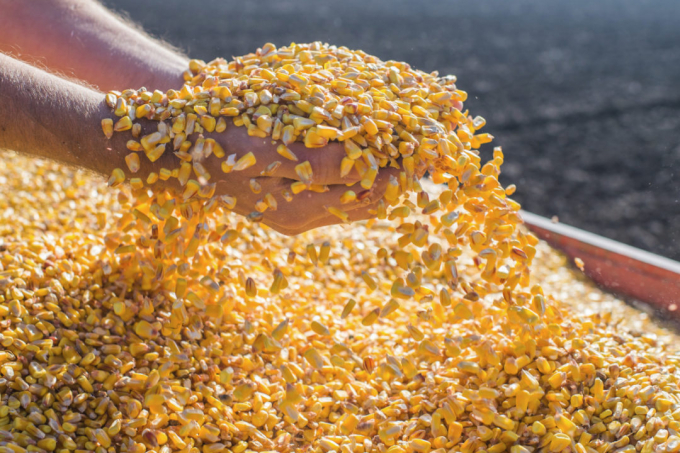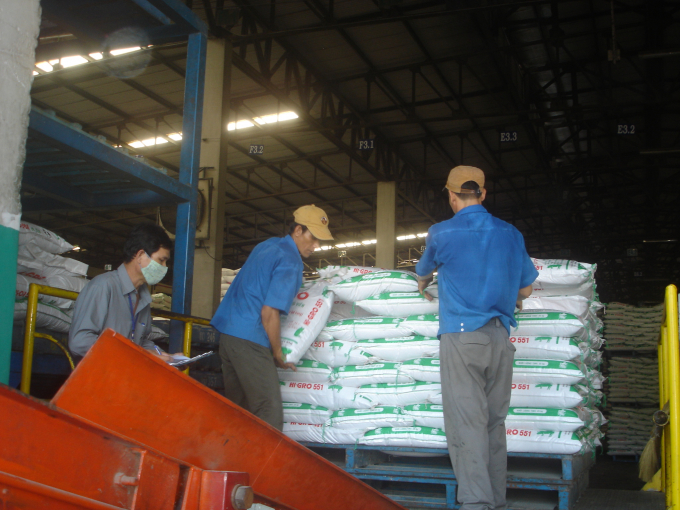November 19, 2025 | 07:34 GMT +7
November 19, 2025 | 07:34 GMT +7
Hotline: 0913.378.918
November 19, 2025 | 07:34 GMT +7
Hotline: 0913.378.918

About 1 million ton of maize are imported to Vietnam every month.
Due to the high demand for animal feed productions, maize importation to Vietnam continues to increase sharply in recent years and, at the moment, has reached around 1 million tons per month.
Statistics from the General Department of Vietnam Customs show that in 2020, Vietnam imported more than 12,072 million tons of maize, worth US$ 2.4 billion, up 5% in volume and 2.8% in value compared to 2019. This is also the first year for the amount of maize imported to Vietnam to exceed 12 million tons.
Consequently, in the past year, on average, around 1 million tons of maize are imported to Vietnam every month.
Maize importation is gradually increasing, while in January 2021, Vietnam has imported 1.147 million tons of maize, up 53.7% in volume and 61.2% in value compared to January 2020.
Most of Vietnam’s maize importations come from Argentina. In 2020, Vietnam has imported maize from Argentina with a volume of around 8 million tons, valued at US$ 1.6 billion.
Maize is imported from Argentina much more than the country that ranks second, Brazil. In 2020, Maize imported from Brazil reached 3.063 million tons, valued at approximately US$ 600 million.

Vietnam’s animal feed industry is thriving, leading to the increasing demand for maize imports.
Maize imported to Vietnam continues to increase sharply in recent years, firstly due to the strong development of the animal feed industry.
In 2020, despite the difficulties by Covid-19, many animal feed factories in Vietnam are still inaugurated and put into operation. For instance, the animal feed factory of C.P Vietnam located in Binh Phuoc province has the most advanced technology in the world with the phase 1 capacity of 300,000 tons a year; Japfa’s animal feed factory, situated in Binh Dinh province, has the capacity of 180,000 tons a year…
With new projects put into operation, at the end of 2020, the total capacity of animal feed processing factories in Vietnam has reached about 40 million tons a year. The output of Vietnam’s animal feed in 2020 has struck a number exceeding 20 million tons, taking the lead in the ASEAN areas and have a spot in the Top 10 countries with the largest production of animal feed in the world.
With such large output, Vietnam’s animal feed industry isn’t only meeting the needs of domestic livestock development fundamentally, but also promotes exports with a value of more than US$ 800 million in 2020.
Considering the fact that Vietnam is having a policy to promote the development of husbandry and aquaculture, the animal feed industry will continue to expand in scale, increase capacity and output in the coming years. Therefore, imports of maize to Vietnam are forecasted to continue to increase.
Translated by Megan Phan

(VAN) 'If we can address disease challenges and properly plan farming zones, Vietnamese shrimp can absolutely rise to lead the world,' Mr. Le Van Quang affirmed.

(VAN) The year 2025 continues to mark a significant footprint for Chanh Thu Fruit Import-Export Group Joint Stock Company (Chanh Thu Group) in the international market.

(VAN) Participating in the exhibition celebrating the 80-year tradition of the Agriculture and Environment sector, Dong Giao Food Export Joint Stock Company (DOVECO) showcased a range of products utilizing new technologies.

(VAN) Vietnam’s pepper export turnover in the first 10 months of 2025 reached $1.39 billion, already surpassing the full-year figure of 2024.

(VAN) AGRITECHNICA 2025 has impressively reaffirmed its position as the world’s leading trade fair for agricultural machinery.
/2025/11/17/4947-2-104601_225.jpg)
(VAN) The international market is growing rapidly, creating major opportunities for Viet Nam's tilapia industry.
/2025/11/17/1234-2-010716_981.jpg)
(VAN) Deputy General Director of Viet Nhat Group Nguyen Dang Ngoc shared experiences on building linkage chains and developing sustainable tilapia farming that meets international standards.